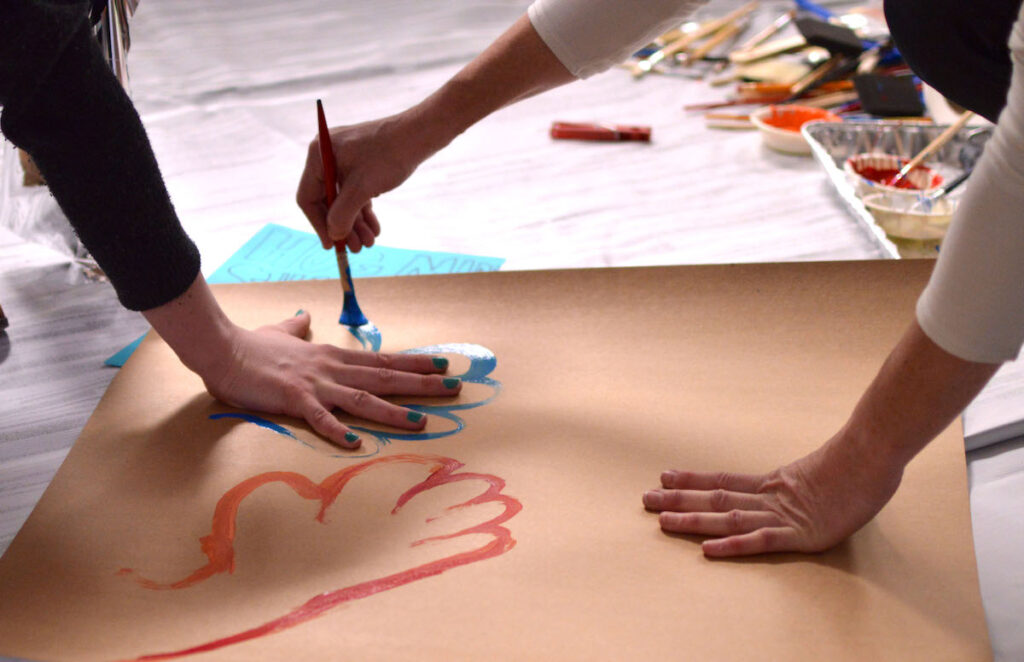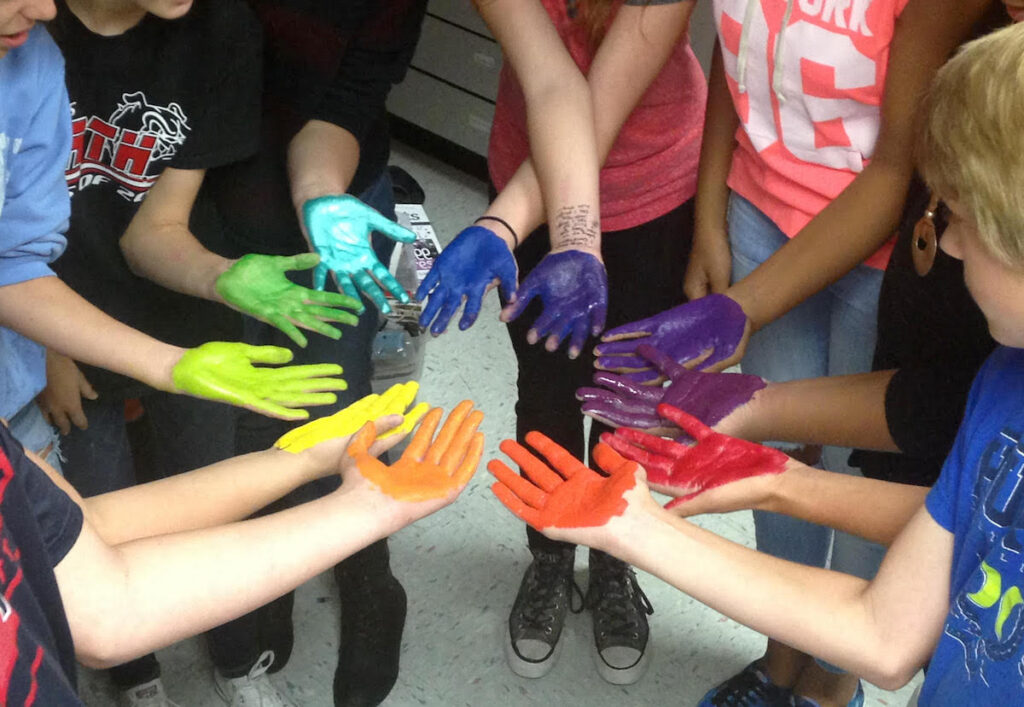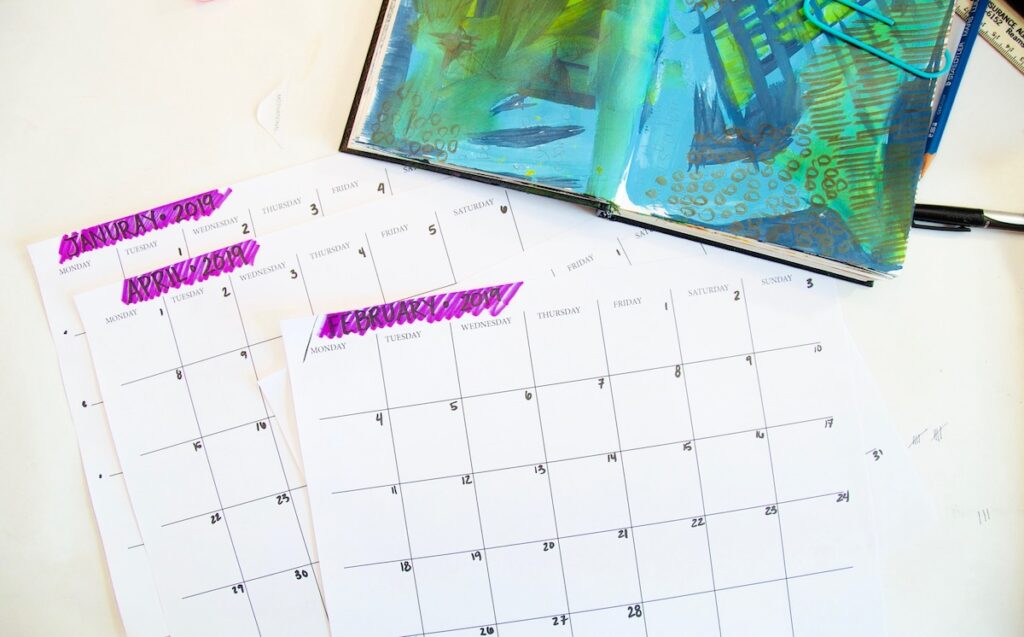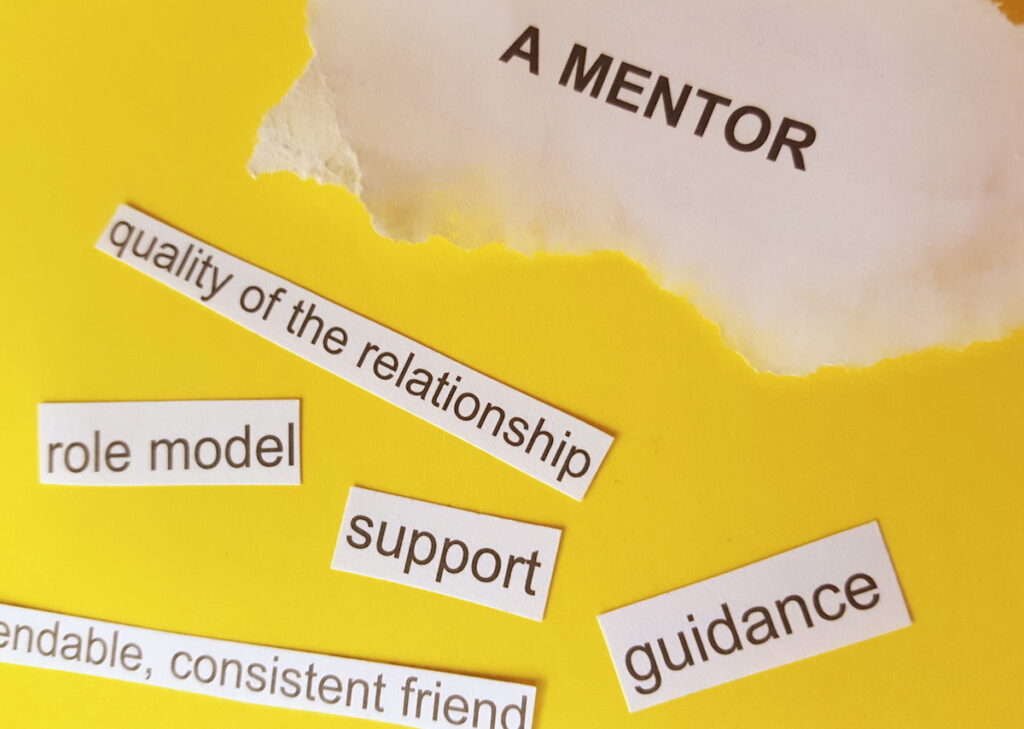Return to Learn with The Art of Education University
As a new educator, you will spend the next few years learning the ins and outs of your new school, discovering the best ways to manage your materials, and trouble-shooting lessons and grading policies. What about the things no one told you about when it comes to your first year? Whether online, in-person or anything in between these tips will help the newly graduated or serve as great reminders to veterans joining a new school.
1. There is no handbook.
Becoming a great teacher is something we must learn and gain through years of experience. Sitting in your college classes, listening to theory, and writing extensive lesson plans leaves us frequently asking, “That’s all fine, but what happens when…?” It might be frustrating at the time, but it’s a great reminder that there truly is no handbook for teaching.
Give yourself grace and know that you probably won’t be a super-star teacher right away. Too much pressure to get things right the first time is a surefire way to set yourself up for a lot of heartache and burn-out.
PRO TIP: Even veteran teachers are constantly revamping curriculum, reconsidering classroom setup, and finding new tips to manage behaviors and needs. Take a deep breath and remember you are not alone. Every teacher has failed at some point, or many points, of their career. You’re passionate about teaching, but you don’t have to know all the answers on day one, and that’s okay.

2. Seek out support.
As you start your journey at your new school, your team will become one of the most important support systems to establish. This team can be your fellow art teachers in your department or district-wide. This team could also be any staff you will be working with to bounce ideas around and lean on when things are just too much. Sometimes a team you are provided can be challenging or present conflict. You will learn to define your team as you move throughout the year.
When joining your new team, make sure to really listen to the conversations. Your team will have key insights into your student population. They will also have a million and one great tips for your first day, week, and year. Of course, you will want to choose what works best for you but know that your colleagues are coming from a place of deep understanding of your environment.
PRO TIP: You may have a lot of exciting ideas to share from your college days that will undoubtedly be helpful. Even though this is the case, there’s also probably a reason the team has set up their curriculum or activities in a particular manner. Don’t assume your colleagues hadn’t thought of your ideas previously. Taking time to really listen to your peers’ conversations will help you curate your valuable ideas to help shape the future of your team.
3. Collaborate and cooperate.
Remember, especially as an art teacher, there are a number of other responsibilities expected beyond your classroom. This is a great time to help create your place as a valuable team member. Offering to help with artwork drop-offs, making a slide-show, helping with social media, all of these are small tasks that show you want to be part of the whole. Your ability to support others will go a long way in your system.
PRO TIP: Don’t forget that you certainly don’t have to—nor should you be expected to—volunteer for every extra responsibility that comes along. Setting your own boundaries is essential to establish what you can or can’t do now and later. It’s good to show that you can help out and be a contributing team member without being taken advantage of. Know what time commitment you can provide and stick to it.

4. Don’t reinvent the wheel.
Creating your very own lessons can be one of the most exciting parts of preparing for the new school year. Unfortunately, now is not the time to start from scratch. Planning for remote, in-person, and every hybrid in between is overwhelming for the most seasoned of teachers. This is the time to really rely on your teammates.
Sure, maybe some of your colleagues’ lessons could use some sprucing up. But remember, those tried-and-true lessons are used repeatedly for a reason; they work! Collaborate with your teammates to modify lessons for whatever your teaching situation will be, but leave the bulk of the lesson as is (at least for now). You can add in your own style with artists to share, extra tips to impart, or tweaking the slide show. Getting to know your students this year will be most important. From there, you can begin to modify or add in your own lessons as you become more acquainted and comfortable.
PRO TIP: Make sure you establish collaboration with your colleagues. Don’t take someone’s plans without asking first. If you do modify the curriculum, make sure you share that with your team as well. Offer any of your planning resources to your team. Whether they use it or not, you will be seen as a contributing member invested in collaboration.

BONUS PRO TIP: Make sure to always try out your lesson idea before jumping in with your students. The last thing you want is a Pinterest-fail after setting up weeks of instruction. Testing out your lesson will allow you to foresee any struggles students might have and address these as much as possible on the front-end.
5. Don’t be that teacher.
Who doesn’t want to be liked by your students? Being the teacher who is more of a friend to students than a teacher, though, is the wrong way to go. Establishing structure, routine, and high expectations is the first step to setting up your classroom this year. Even in online learning, you will need to make your expectations clear. Students thrive on these routines, finding comfort in the expected. Students will admire you for noticing their hard work, their personal interests, and your keen observations of their creative thinking skills.
PRO TIP: Remember, Social-Emotional Learning integrates essential teaching practices with your curriculum in authentic ways. Giving your students every Wednesday to watch Bob’s Burgers isn’t addressing students’ social-emotional needs, nor is it meeting any art standards. Teaching mindfulness techniques while in the art-making process, on the other hand, will support your students as well as advance your curriculum.

6. Take care of yourself.
This year, more so than others, you will need to intentionally schedule self-care practices into your routine. Teaching is a profession where you can just keep on giving until there isn’t much left to give. Your hard work and extensive efforts will be rewarding, for sure. But in the end, you want to keep teaching for a long time. Do yourself a favor now and set personal boundaries and goals to help establish healthy expectations for your school year.
Return to Learn with The Art of Education University
PRO TIP: Personal days are important to take for your mental health. Sometimes, taking a personal health day to binge-watch Netflix is just the fix you need. Other times, taking a day to grade and plan can really feel great, too. Regardless of how you choose to use your personal days off, make sure you don’t leave your colleagues in a lurch. Taking the day off during an art show installation, for example, will put more pressure on your colleagues when they are also stretched thin. Obviously, there are times when you can’t anticipate a need for a break. When possible, anticipating your need for a day off and preparing sub plans early will keep everyone’s stress at a minimum.
7. Find a mentor or coach.
Finding “your person” in a sea of educators and staff might be overwhelming to think about, but you will definitely want to find someone who will support you every step of the way. Some schools have a mentor system for new teachers. Others have Learning Support Coaches established and available. You might not always land on the perfect fit depending on personality and needs, but don’t give up!
Another great option we rarely think about is requesting release time to observe another teacher (or multiple teachers). If you work with a mentor or coach, they can also point out teachers who have specific strengths you will want to observe. Not only will you gain perspective on a variety of teaching methods but also specific strategies you might want to implement later. Observing other art teachers gives you insight into your colleagues’ teaching, so you know who to ping when you need support in a specific area.
PRO TIP: Observe other teachers in your department as well as teachers in different content areas. You never know what tip or trick you might pick up from science or math. This is also a great opportunity to make connections throughout your building and find someone to collaborate with in designing cross-curricular approaches.

8. Above all else, reflect.
This cannot be stated enough: be reflective. This is the single most important attribute other teachers value in new teachers. As a new teacher, it’s so easy to get caught in the craziness of year one. How can you also remember to take a moment and reflect on what is actually happening in and out of your classroom? Being reflective allows you to consider what is working and not working in your teaching practice. Reflection also allows us to address student needs in real-time because we are observant and thoughtful of our practice.
PRO TIP: It’s okay to admit when something isn’t working. This is a great time to rely on your team for support! When your strategies need tweaking or your lesson needs a u-turn, talk to your colleagues for their go-to tips. Even if they haven’t encountered your issue before (but most likely they have), they can help you problem-solve ways that will work for you. When something is working, make sure to take time to celebrate your successes, too. Again, having a mentor relationship will be a great way to help you stay reflective, challenge your ideas, and celebrate your successes.
Being a new teacher is truly exciting and, let’s be honest, overwhelming. Remember, you don’t have to have everything set up for perfection on day one. Your students won’t remember your mistakes (we are our worst critic, after all). Instead, remind yourself that if your teaching is wrapped in a passion for art education and a love for your students, you cannot go astray. Finally, don’t forget that you are definitely not alone. Whether you find support with your new team, your mentor, or even your online community, art teachers are always excited to share and help. And of course, your AOEU community is always here for you.
What specific support systems can you identify at your new school?
What are your biggest concerns as you start the new school year as a new educator?
In what ways can you lean on your department or team to support your teaching practices?
Magazine articles and podcasts are opinions of professional education contributors and do not necessarily represent the position of the Art of Education University (AOEU) or its academic offerings. Contributors use terms in the way they are most often talked about in the scope of their educational experiences.





